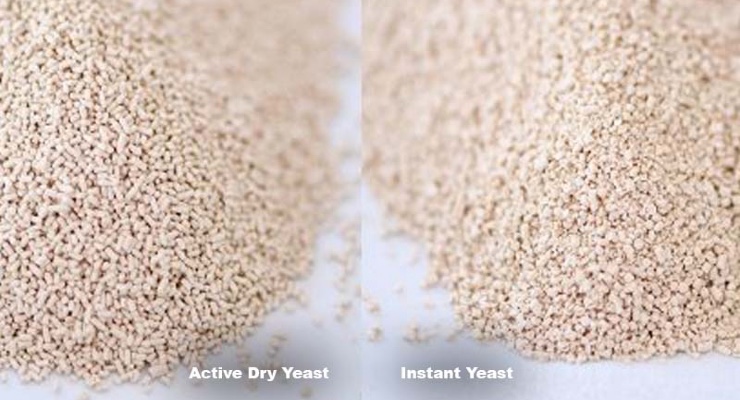Understanding The Different Types Of Yeast In Baking
If you are an experienced baker, you're probably already familiar with the several kinds of yeast that are used to make bread. Instant yeast, active dry yeast, and double-acting dry yeast are commonly used by home bakers. Although they may appear to be similar, each species of yeast differs significantly in terms of composition, activation, and functionality.

Instant Yeast
In comparison to active dry yeast, instant yeast is processed into significantly smaller granules and is also referred to as rapid-rise or bread machine yeast. It doesn't need to be proofed in milk or warm water because it is intended to be combined right into dry ingredients. Bread rises more quickly thanks to instant yeast's speedy action than with conventional yeasts. This form of yeast is extremely practical because it doesn't need to be prepared or handled specially. It can simply be added directly to bread dough.
Active Dry Yeast
Active dry yeast, on the other hand needs to be activated by proving it in warm water or milk before being added to the dry ingredients in a recipe. Active dry yeast has bigger granules, and will typically foam and activate within 10 to 15 minutes when dissolved in warm water. Because it must be proofed before use, it adds an extra step to the bread-making process, which can be time-consuming. Additionally, if the yeast is not activated properly, the bread may not rise properly or may have a dense, heavy texture. However, active dry yeast remains a popular and reliable choice for many bakers, especially those who prefer to use traditional methods and recipes.
Double-Acting Dry Yeast
Another variety of yeast is double-acting dry yeast, which combines the virtues of both instant and active dry yeast. Instant yeast and active dry yeast are both present in this yeast. The instant yeast provides the initial rise, while the active dry yeast helps the dough to rise during baking, giving it a lighter and more uniform texture. In enriched breads like brioche, and sweet breads like cinnamon rolls, double-acting dry yeast is frequently used.
Fresh Yeast
Fresh yeast, also known as cake yeast or compressed yeast, is a type of yeast that is commonly used by professional bakers. Unlike dry yeast, which comes in granular or powdered form, fresh yeast is a moist and perishable product that needs to be refrigerated to keep them dormant until they are ready to be used for baking. Some bakers prefer fresh yeast to dry yeast because of its potent and distinctive flavour. In addition, because it is simpler to activate and can endure a wider range of temperatures than dry yeast, it is said to be more forgiving. However, fresh yeast has a shorter shelf life than dry yeast and needs to be used within a few days of purchase. It is also more difficult to find in stores, especially outside of bakeries or specialty stores.

With some slight adjustments in the amount of yeast used, proving times and rising times, each variety of yeast may often be used interchangeably in bread-making recipes despite having distinct qualities of its own. To guarantee that your bread comes out perfectly, it's important to follow the specific instructions for the type of yeast you're using in your recipe, whether you're making a quick loaf of bread or a more complex recipe.
Keep in mind, fresh yeast must be used within a few days of purchase because it is quite perishable, even if kept refrigerated. It should not be used if it appears dried out, discoloured, or has an off smell. Fresh yeast is therefore less frequently used in home baking than dry yeast. Yet, due to its distinctive flavour and scent, which can be challenging to reproduce with dry yeast, some expert bakers and bread enthusiasts prefer to use fresh yeast.
Testing Your Yeast: A Simple Method to Ensure Dry Yeast Is Still Active
Dry yeast can also lose its potency over time, so to ensure that your yeast is still active before using it in your recipe, simply dissolve a small amount of yeast in some warm water with a pinch of sugar, and wait for it to become frothy. If the mixture does not become frothy within 5-10 minutes, the yeast may have lost its potency.


